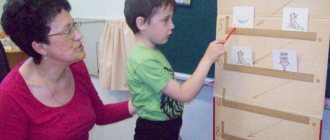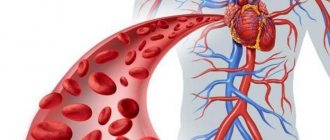Parents who have learned from specialists that their child has problems with speech development often wonder what causes them. This question becomes especially important for them if none of the immediate family had speech disorders. Speech disorders can arise under the influence of unfavorable circumstances, or, as experts say, harmful factors acting from within or without and often combined with each other.
Special and reference literature describes the causes predisposing to the occurrence of speech disorders. They are usually divided into two groups - organic (leading to disruption of mechanisms in the central or peripheral speech apparatus) and functional (disrupting the normal functioning of the speech apparatus).
It is worth practicing with children for any speech problems!
Speech disorders are said to occur if a child's speech skills do not correspond to his age. Many disadvantages are difficult to overcome on your own. Pedagogical science - speech therapy - helps to cope with them.
It’s worth remembering: no matter what childhood speech disorders are, they definitely need to be dealt with and not left to chance. Mild speech problems may disappear completely. With reasonable effort and practice, this will happen faster. Moderate and severe violations are subject to partial correction.
Hopeless cases occur only with complex defects of the articulatory apparatus, psyche or brain structures, but there are options here too.
The child will have to adapt to life in society, and our task is to help him do this as painlessly as possible. Intelligible, clear speech and the ability to formulate thoughts influence socialization. Although we try to fight it, children with speech disorders are often teased, we must try to avoid this. It is important that the child is understood by his peers and others, this affects his self-esteem and desire to adapt to society.
The etiology of speech disorders has long been of interest to humanity (etiology translated from Greek means the study of causes). Even in ancient times, the Greek philosopher and physician Hippocrates (460-377 BC) saw the cause of a number of speech disorders, in particular stuttering, in brain damage. Another Greek philosopher Aristotle (384-322 BC), linking the processes of speech formation with the anatomical structure of the peripheral speech apparatus, saw the causes of speech disorders in the violation of the latter. Thus, already in the research of ancient scientists, two directions were outlined in understanding the causes of speech disorders. The first of them, emanating from Hippocrates, gave the leading role in the occurrence of speech disorders to brain lesions; the second, originating from Aristotle, is disorders of the peripheral speech apparatus. At subsequent stages of studying the etiology of speech disorders, these two points of view were preserved. These conclusions were confirmed by genuine scientific facts. The brain is specialized for speech. In 1861, the French physician Paul Broca showed the presence of a field in the brain specifically related to speech. The field is located in the folds of the frontal lobe. Broca's area controls the flow of words from the brain to the mouth. Every minute, two hundred syllables clearly synchronize our speech. When words are heard, the sounds reach the auditory area of the cortex, from where they pass in the form of a neurological code to the neighboring Wernicke's area (the discovery was made by Wernicke in 1874). This area is located in the left temporal lobe and makes us able to understand speech. In speech therapy, the cause of speech disorders is understood as the impact on the body of an external or internal harmful factor or their interaction, which determine the specifics of a speech disorder and without which the latter cannot occur. Thus, there are two groups of reasons leading to speech disorders: internal (endogenous) and external (exogenous). I will dwell in detail on each group of reasons. Internal (endogenous) causes of speech disorders Depending on the time of exposure to these factors, intrauterine pathology is distinguished (exposure during the period of intrauterine development). Intrauterine pathology is often combined with damage to the child’s nervous system during childbirth. Such lesions of the child’s nervous system combine various pathological conditions caused by exposure to harmful factors on the fetus in the prenatal period, during childbirth and in the first days after birth. These include: 1. Diseases of the mother during pregnancy (heart disease, liver disease, kidney disease, pulmonary disease, diabetes, hypotension, positive antiglobulin test, urinary tract infections) are common diseases that require treatment. 2. Compounded heredity (diabetes, hypertension, developmental defects, genetic and mental diseases). 3. Mother's allergies. 4. Previous blood transfusions. 5 Toxicosis of pregnancy, regardless of the stage of pregnancy. 6. Immunological incompatibility of the blood of mother and fetus (for Rh factor, ABO system and other erythrocyte antigens). Rhesus or group antibodies, penetrating the placenta, cause the breakdown of fetal red blood cells. As a result, a substance toxic to the central nervous system, indirect bilirubin, is released from red blood cells. Under its influence, the subcortical parts of the brain and auditory nuclei are affected, which leads to specific disturbances in the sound-pronunciation aspect of speech in combination with hearing impairment. 7. Various obstetric pathologies (narrow pelvis, prolonged or rapid labor, premature rupture of water, entanglement of the umbilical cord, malpresentation of the fetus, multiple pregnancy, polyhydramnios, placental insufficiency). 8. Smoking during pregnancy, drinking alcohol. Currently, the clinical picture of various developmental disorders of the fetus and child of alcoholic-embryopathic genesis (origin), combined with speech disorders, has been studied. The influence of alcohol (even minimal doses: beer, cocktails, weak wine) on the occurrence of various speech defects has been scientifically proven; alcoholic embryopathic syndrome has been described, including retardation of physical, speech and mental development. 9. Condition after treatment for infertility, premature birth (before the end of the 37th week of pregnancy), complicated childbirth (caesarean section), 2 or more miscarriages (abortions). 10. Short interval between two pregnancies (less than 1 year). 11. The short stature of the expectant mother. 12. Skeletal abnormalities (impaired maternal posture). With poor posture, a misalignment of the pelvic bones often occurs, which makes childbirth difficult; in addition, the tone of the uterus, which also consists of muscles, is decreased or increased. The uterus is innervated from spinal segments at the lumbosacral level. This leads to weakness of labor. 13. Pregnancy before reaching 18 years of age or after 40 years of age. 14. Special mental stress (family or professional), social stress (economic and material difficulties, integration problems). The main causes of damage to the nervous system are hypoxia and birth trauma. My dear readers, pay close attention to what is written; your child’s health and educational success depend on understanding what you read below! Hypoxia is an insufficient supply of oxygen to the tissues of the placenta and fetus. The cause of fetal hypoxia can be: - heart defects in the mother; - bronchitis associated with smoking during pregnancy; — early toxicosis (from 4 weeks to 4 months); - histosis; - pathology of the umbilical cord, knots on it, too short umbilical cord. Hypoxia also develops if the mother suffers from anemia (low hemoglobin). As a result, chronic placental insufficiency develops, and the maturation of brain structures is significantly impaired in the fetus. This happens for the following reason. Imagine childbirth. The uterus rapidly pushes out the child's body, the body pushes the massive head in front of itself, which pushes the birth canal apart, while pushing with the help of a weak, undeveloped neck - after all, the child will learn to hold his head on this neck after weeks. The pressure on the neck and cervical vertebrae reaches several tens of kilograms. And in the cervical vertebrae there are extremely important vertebral arteries that supply blood to the brain. Under pressure, the vertebrae rotate, shift left and right, and touch a delicate artery. Hence the artery spasm. As a result, the brain is on a starvation diet. Even with short-term hypoxia, cerebral circulation disorders occur in the nervous system of the fetus and newborn. Prolonged and repeated hypoxic conditions lead to severe disturbances in cerebral circulation and the death of nerve cells responsible for speech, attention, and behavior. In premature infants, hypoxic damage mainly affects the subcortical structures of the brain. In children born at term, the cerebral cortex is most often affected. Such damage often becomes a kind of transitional stage between acute and chronic brain damage and forms the basis of mild brain dysfunction. Birth trauma is local damage to the fetus caused by mechanical force directly on the fetus during childbirth. During childbirth, the spine and, first of all, its cervical region suffer. Even during normal childbirth, when a child passes through the birth canal, hyperextension of the head in the cervical region occurs, and the occipital bone slips in relation to the 1st cervical vertebra. As a result, a pathological displacement of the first 2 cervical vertebrae in relation to each other or a state of subluxation is possible. The system of vertebral arteries, through which the brain stem and other parts of the brain receive blood, is injured. Chronic ischemia—cerebral circulatory failure—occurs, which is why brain functions are disrupted. As a result, those structures that are responsible for speech, attention, behavior, and emotions suffer. External (exogenous) causes of speech disorders For normal speech development of a child, communication must be meaningful, take place against an emotional positive background and encourage a response. It is not enough for him to simply hear sounds (radio, TV, tape recorder); first of all, he needs direct communication with adults based on the leading form of activity characteristic of this age stage. An important stimulus for speech development is a change in the form of communication between a child and an adult. Thus, if the emotional communication characteristic of 1 year of life is not replaced by objective and effective communication with a 2-3 year old child, then there is a serious threat of mental development delay. The child’s speech is disrupted and delayed in the absence of a positive emotional environment. Speech develops by imitation, so some speech disorders (stuttering, unclear pronunciation, impaired speech tempo) may be based on imitation. Speech disorders can often occur due to various mental traumas (fear, anxiety due to separation from loved ones, long-term traumatic situation in the family). This delays the development of speech, and in some cases, especially with acute mental trauma, causes psychogenic speech disorders in the child: mutism (complete refusal of speech communication), neurotic stuttering. Also affected by the general physical weakness of the body, immaturity due to prematurity, rickets. Various metabolic disorders, diseases of internal organs. In conclusion, I would like to conclude: any general or neuropsychiatric illness of a child in the first years of life is usually accompanied by a violation of speech development. Dear readers! I urge you (especially expectant mothers) to pay attention to any little things that may actually indicate serious problems.
Where do speech disorders come from?
Speech disorders are problems with verbal communication, speech motor skills, and related areas. They are very diverse: some are associated with the inability to speak, others with speech incontinence. They arise due to physiological, neurological or mental problems, due to pedagogical neglect. Any speech disorder is not a reason to stigmatize a child, much less shame him.
Difficulties with speech can be organic, that is, caused by damage to the speech organs. They are like this:
- Hereditary, when the problem was passed on from parents. It happens that one of the parents at one time began to speak later, has peculiarities in the bite or setting of the teeth, and this is passed on to the children.
- Congenital (intrauterine) pathologies. Caused by the difficult course of pregnancy or taking medications, hypoxia, infectious disease of the pregnant woman, blood incompatibility, prematurity or postmaturity, maternal stress or intoxication.
- Perinatal (caused by complications during childbirth). Priority attention should be given to children who suffered asphyxia or head trauma due to a narrow birth canal, were born weighing less than 1.5 kg and were resuscitated.
- Postnatal (caused by diseases in the first months or years of life). Speech disturbances can cause infections (meningitis, otitis media), head injuries and palatal injuries.
- Social and everyday, when the child lacks emotional and verbal communication with loved ones. These are not necessarily families with drinking parents - it happens that quite successful mothers and fathers simply do not have enough time for their children.
Also, speech disorders can be of an endocrine nature (due to the characteristics of the child’s psychomotor development), functional (defects or characteristics of the speech organs), psychosomatic or caused by the environment.
Causes of speech disorders
In speech therapy, the cause of speech disorders is understood as the impact on the body of an external or internal harmful factor or their interaction, which determine the specifics of a speech disorder and without which the latter cannot occur.
Thus, there are two groups of reasons leading to speech disorders: internal (endogenous) and external (exogenous).
Depending on the time of exposure to these factors, intrauterine pathology is distinguished (exposure during intrauterine development). Intrauterine pathology is often combined with damage to the child’s nervous system during childbirth. Such lesions of the child’s nervous system combine various pathological conditions caused by exposure to harmful factors on the fetus in the prenatal period, during childbirth and in the first days after birth.
These include:
- Maternal diseases during pregnancy (heart disease, liver disease, kidney disease, pulmonary disease, diabetes, hypotension, positive antiglobulin test, urinary tract infections) are common diseases that require treatment.
- Mental and somatic diseases of the mother (diabetes, hypertension, developmental defects, genetic and mental diseases).
- Mother's allergies.
- Previous blood transfusions.
- Toxicosis of pregnancy, regardless of the stage of pregnancy.
- Immunological incompatibility of the blood of mother and fetus (Rh factor, ABO system and other erythrocyte antigens). Rhesus or group antibodies, penetrating the placenta, cause the breakdown of fetal red blood cells. As a result, a substance toxic to the central nervous system, indirect bilirubin, is released from red blood cells. Under its influence, the subcortical parts of the brain and auditory nuclei are affected, which leads to specific disturbances in the sound-pronunciation aspect of speech in combination with hearing impairment.
- Various obstetric pathologies (narrow pelvis, prolonged or rapid labor, premature rupture of water, entanglement of the umbilical cord, malpresentation of the fetus, multiple pregnancy, polyhydramnios, placental insufficiency).
- Smoking during pregnancy, drinking alcohol. Currently, the clinical picture of various developmental disorders of the fetus and child of alcoholic-embryopathic genesis (origin), combined with speech disorders, has been studied. The influence of alcohol (even minimal doses: beer, cocktails, weak wine) on the occurrence of various speech defects has been scientifically proven; alcoholic embryopathic syndrome has been described, including retardation of physical, speech and mental development.
- Condition after treatment for infertility, premature birth (before the end of the 37th week of pregnancy), complicated childbirth (caesarean section), 2 or more miscarriages (abortions).
- Short interval between two pregnancies (less than 1 year).
- The short stature of the expectant mother.
- Skeletal abnormalities (impaired maternal posture). With poor posture, a misalignment of the pelvic bones often occurs, which makes childbirth difficult; in addition, the tone of the uterus, which also consists of muscles, is decreased or increased. The uterus is innervated from spinal segments at the lumbosacral level. This leads to weakness of labor.
- Pregnancy before age 18 or after age 40.
- Special mental stress (family or professional), social stress (economic and material difficulties, integration problems).
The main causes of damage to the nervous system are hypoxia and birth trauma. Hypoxia is an insufficient supply of oxygen to the tissues of the placenta and fetus.
The cause of fetal hypoxia can be:
- maternal heart defects;
- bronchitis associated with smoking during pregnancy;
- early toxicosis (from 4 weeks to 4 months);
- histosis;
- pathology of the umbilical cord, nodes on it, too short umbilical cord.
Hypoxia also develops if the mother suffers from anemia (low hemoglobin). Birth trauma is local damage to the fetus caused by mechanical force directly on the fetus during childbirth.
Author: Olga Eletskaya
What should parents be wary of in their child’s speech?
Symptoms of speech disorders can be different: a poor vocabulary (the baby does not remember words well, confuses endings, speaks little, uses generalizations), poor understanding of words or phrases, and inability to reproduce certain sounds. The most famous defect is stuttering, which disrupts the rhythm and fluency of speech.
According to experts, the problem can be identified very early. You need to communicate with your baby from the first moments of his life, even when he is not able to consciously react. If a child does not show similar communicative activity as other children of his age, you should pay attention. But this in itself is not a diagnosis; you don’t need to beat yourself up right away.
The features listed in the table may indicate problems with speech in children.
| Month of life (by the end of the month) | What the baby can't do |
| 1 | Doesn't cry when hungry or uncomfortable |
| 4 | Doesn't smile back when people talk to him |
| 5 | Does not produce sounds or sound combinations. Does not look for things that an adult is pointing at |
| 7 | Does not know how to attract the attention of adults using sounds |
| 9 | There are still no words consisting of two repeated syllables (ma-ma, ba-ba, na-na) |
| 10 | The child does not speak 8 syllables. Doesn’t shake his head in denial, doesn’t make a “bye-bye” gesture with his pen |
| 12 | Doesn’t say a word, doesn’t react to simple requests (“give me the ball”) |
| 15 | Can't even say "mom" or "dad" |
| 19 | Doesn't speak meaningful words. Doesn't point at body parts the parent is talking about |
| 29 | Doesn’t understand the difference between “big” and “small” |
The last indicator - the end of the 29th month - is close to the time when it is time for the child to go to kindergarten. Violations, if any, are already noticeable by this point. If these problems occur, you should visit a consultation:
- otolaryngologist (perhaps the baby speaks poorly because he cannot hear);
- neurologist (check for organic damage to the central nervous system, speech centers of the cerebral cortex);
- child psychologist, psychiatrist, defectologist (find out the state of the child’s non-verbal intelligence);
- speech therapist (will conduct a final diagnosis).
Types of speech disorders (classification from a medical point of view)
Speech problems in preschool children can be classified according to clinical-pedagogical and psychological-pedagogical indicators. The two classifications should be considered together: together they help to understand the cause of the violation and determine ways to eliminate it.
The clinical and pedagogical classification is closer to the medical one, and we’ll talk about it now. She divides speech deviations into oral and written. The first can be phonational or systemic.
With phonation, the source of the problem can be improper voice formation, sound pronunciation, tempo, and intonation. That is, the child understands speech directed to him 100%, but cannot reproduce it. The following phonation disorders are classified (in alphabetical order):
- Bradylalia is a slow rate of speech.
- Dysarthria is a disorder due to insufficient innervation of the articulatory apparatus.
- Dysglosia - difficulties with pronunciation due to palatal, jaw, and other clefts.
- Dyslalia is a deviation with full hearing and intact speech apparatus.
- Dysphonia is a complete or fragmented disorder of phonation due to an abnormality of the vocal apparatus.
- Stuttering is a disruption in tempo due to spasms of the jaw muscles.
- Rhinolalia is a specificity of voice timbre and sound pronunciation due to articulatory features.
- Tahilalia - the child is frequent with words.
Systemic deviations are more severe. They are formed due to lesions in the cerebral cortex. The child partially loses the ability to correctly repeat words and phrases and understand their meaning. There are two types of violations:
- Alalia is the inability to speak or underdevelopment due to damage to the speech areas of the cerebral cortex formed during fetal development or after birth.
- Aphasia is a complete or partial loss of speech due to brain damage (stroke, etc.). More often, the diagnosis is made explicitly after the 3rd birthday.
Among the above, severe speech disorders can be identified - persistent deviations of the speech system with preserved hearing and intelligence. These include sensory and motor alalia, severe variants of dysarthria, rhinolalia, stuttering, aphasia and other deviations. Such problems can influence the formation of the psyche.
Impairments in written speech can be noticed in older kindergarten or in the first grades of school. This is dyslexia (the child incorrectly identifies letters and forms words from them, difficulties arise with reading), dysgraphia (when writing, letter signs are mixed, rearranged or omitted).
“Causes of speech disorders in children.” article on speech therapy (senior group)
"Causes of speech disorders in children."
Speech disorders in children are a serious problem of our time. For some reason, more and more often, before entering school, parents are surprised to learn that their seven-year-old child cannot pronounce one or more letters of his native language, and that, for parents, the cute and funny burr is a deviation from the norm, which will prevent the child from fully studying at school. The most unpleasant thing is that there is no tendency to reduce the number of such children; on the contrary, every year more and more children need the help of a speech therapist. What is the reason for this phenomenon in our enlightened age? And what do parents need to know in this regard?
Speech impairment is determined by the deviation of the speaker’s speech from the language norm accepted in a given language environment. Having arisen, speech disorders do not disappear on their own, but become fixed, do not correspond to the age of the speaker, and require one or another speech therapy intervention. A child’s incorrect speech can affect his further development, delaying and distorting it, and can make it difficult to learn at school.
What do speech disorders depend on, what are they associated with?
Speech disorders are varied; they depend, firstly, on the complexity of the anatomical and physiological mechanisms involved in the formation and flow of speech; in addition, from the close interaction of the human body with the external environment and from the social conditioning of speech in relation to both its form and content.
Speech disorders can occur at any age, but speech is most vulnerable in children.
Causes of speech disorders:
1) Various intrauterine pathologies that lead to impaired fetal development. The most severe speech defects occur when fetal development is disrupted in the period from 4 weeks. up to 4 months The occurrence of speech pathology is facilitated by toxicosis during pregnancy, viral and endocrine diseases, injuries, blood incompatibility according to the Rh factor, etc.
2) Birth trauma and asphyxia during childbirth, which lead to intracranial hemorrhage.
3) Various diseases in the first years of a child’s life.
Depending on the time of exposure and the location of brain damage, speech defects of various types occur. Particularly detrimental to speech development are frequent infectious viral diseases, meningo-encephalitis and early gastrointestinal disorders.
4) Skull injuries accompanied by concussion.
5) Hereditary factors.
In these cases, speech disorders may constitute only part of the general nervous system disorder and be combined with intellectual and motor impairment.
6) Unfavorable social and living conditions leading to microsocial pedagogical neglect, autonomic dysfunction, disorders of the emotional-volitional sphere and deficits in speech development.
Speech disorders are varied: from violations of the pronunciation of individual sounds (r), (l), (sh, zh, h, sch), (s-z, c), etc.; several groups of sounds - whistling, hissing, sonors (r, l), etc. (which leads to misunderstanding of the speaker’s speech) - to complete absence of speech in the case of severe speech disorders (alalia and aphasia), when a child or adult is explained by individual sounds and gestures. A type of speech disorder such as stuttering (logoneurosis) often occurs - from mild to severe, when, due to impaired speech breathing, spasms and convulsions in the speech-motor and respiratory apparatus, speech is practically impossible. There are severe speech disorders (rhinolalia) associated with gross congenital anatomical anomalies - these are cleft palates, upper lips, and wings of the nose. Due to anomalies in the structure of the speech apparatus, such children cannot independently form the sounds of their native language. Speech is incomprehensible, with a nasal tint. Incorrect pronunciation can also develop in children with an abnormal bite, with incorrect structure of teeth and dentition. The formation of speech can be negatively affected by the incorrect language environment in which the child is raised, speech defects of an adult (parents, educators...), and limited language communication with the child. Conversations, reading, answering questions, playing together, where the child, imitating an adult, develops and improves his speech - if this is not present in the family or is present to a limited extent, then the child develops a delay in speech and mental development. Television has a bad effect on the development of speech in young children (from 1 to 4 years old) if it replaces communication with a loved one (mother, father, brother, sister, grandparents). When watching television, a child takes a passive position, accepts information (it’s good if it’s positive), does not participate in the game, in a fairy tale, cannot ask a question - he is silent. The more he “communicates” with the TV, the more he remains silent, the more his speech activity is inhibited. For older children (5-7 years old), prolonged television viewing is also harmful for speech formation, since the most active period of speech development occurs before the age of 7 years. Choose TV shows and videos for your child yourself. Watch with him, explain and reason together. Limit television communication in time (from 15 minutes to 1 hour): either one movie, or one fairy tale.
Improper speech environment and upbringing can also cause speech defects in children (type of distortion). In this state of affairs, a small child is not able to perceive the linguistic norm of his native language, the articulatory structures of the sounds of audible speech, and he develops an incorrect or inaccurate perception of speech sounds. And this, in turn, leads to the appearance of sound pronunciation defects.
When is it necessary to seek help from specialists?
By the end of the first year of life, with intact hearing, the child begins to develop understanding of speech. If this does not happen, that is, the baby does not engage in the work of imitating the actions and speech of adults, and is not active in activities with toys, then one can suspect underdevelopment of the intellect.
In this case, the semantic side of speech will suffer more, so the main help should be aimed at developing cognitive interests.
If a child at 2 years old has normal hearing, but speech is not developed, he needs active communication with adults through gestures and any sounds, and then in the near future the baby will have to develop words.
The child is 2 years 7 months old and he still doesn’t speak? It is necessary to start special classes to create the need for conversation. At this age, if the baby has problems with speech, he needs to be shown to specialists and examined.
Adults should never reproach a child for experiencing certain difficulties in the process of verbal communication, as this can cause fear of having to speak and fear of making a mistake. The child must be encouraged and supported in the slightest attempts to use words. You should specifically create situations in which the baby is forced to say something.
If, with intact hearing and normal intelligence, by the age of three the child does not have phrasal speech or uses incorrect sentences, we can talk about systemic speech disorders (in understanding the meaning of words, changing them, using them).
The speech of such children develops better in the process of some kind of activity, so it is necessary to play together, involve the child in housework, read books that are simple in content, and give comments to everything that the child sees and does. When communicating with your baby, you should use simple, laconic sentences, and words for repetition should be used in different case forms.
If a four-year-old child’s sound pronunciation is significantly behind the norm, that is, there are numerous substitutions in speech: instead of hissing ones, whistling ones are pronounced (sh-s, zh-z, sch-s), the sound p is replaced by l, l or y, replacement of hard consonants with corresponding soft - this indicates a violation of phonemic hearing and, accordingly, the need to conduct classes for the purpose of its development.
There may also be a distorted pronunciation of individual consonant sounds: p throat; p single-impact (that is, pronounced without vibration of the tip of the tongue); l bilabial, similar to English w; whistling sounds s, z, z, pronounced by inserting the tip of the tongue between the teeth.
These speech defects are not age-related and will not disappear on their own, so parents do not need to postpone their correction to a later date, so as not to reinforce incorrect pronunciation in speech. To set the sound, you should contact a specialist, and the parents themselves can help the child develop the ability to use the set sound. At first, the baby can pronounce the sound as it should in some words, but still replace it in others. The role of adults is to correct the child and ask him to repeat the word correctly. When reinforcing sounds, the words that the child pronounces correctly are used.
By the age of five, undeveloped coherent speech, low speech activity, lack of curiosity, and poor vocabulary may indicate mental retardation.
According to many experts, the beginning of targeted work on the formation of correct sound pronunciation from the age of three helps prevent the appearance of many speech disorders, and often identify other, more complex speech pathologies in children of this age, which contributes to their early correction.
What preventative measures can be recommended to parents and grandparents?
For proper speech development and prevention of speech disorders in children, a healthy speech environment is necessary from the very birth of the child. Talk to him without adapting to him, “lisping and breaking your tongue.” By speaking in “childish” language with your baby, you deprive him of the correct speech pattern, since his speech is formed in communication with you. Prolonged sucking of a pacifier or finger can also have a harmful effect on sound pronunciation; this must be monitored. By reading books to your child, talking with him, answering questions, you thereby develop and improve his speech. By listening carefully to the child, you encourage him to make statements, to active speech, his grammatical structure develops, speech patterns are improved, and the child’s vocabulary is enriched. Never, even if you are tired, tell your child: “leave me alone”, “no time” - by doing this you are slowing down the child’s development, reducing or nullifying his speech activity, his mental activity. Be a friend and helper to your child, and improve your speech with him
Speech disorders (psychological classification)
To determine how much the defect can be influenced and corrected, a psychological and pedagogical classification was invented. Correction occurs during speech therapy sessions.
Deviations from the point of view of psychology and pedagogy are:
- Phonetic-phonemic - the child pronounces phonemes incorrectly because he also perceives them incorrectly.
- General speech underdevelopment - there are problems with all components of the articular system. The child develops speech late, it is poor, and it is difficult for him to pronounce some sounds.
- Stuttering – communication means are developed correctly, the problem is only in their use.
According to this classification, children can be divided into 3 conditional groups:
- They don’t pronounce individual sounds, there are no other problems.
- There are problems in the perception of sounds and their reproduction. Children do not distinguish some sounds, do not see articulatory and acoustic differences. They rearrange syllables when speaking, write and read poorly, and “swallow” the endings of words.
- They have general speech underdevelopment. They do not put sounds into syllables, have a small vocabulary, and do not speak coherently. If a speech therapist does not begin to treat such children on time, they may have huge communication problems.
Speech disorders affect the mental functions of a preschooler. The attention of such children is often characterized by instability. They have difficulty generalizing, comparing and analyzing, and perceiving verbal instructions. Such children are characterized by poor coordination, they are slow and awkward, and have underdeveloped fine motor skills. A child with severe disabilities lacks self-confidence, is touchy, and has difficulty establishing contacts.
Prevention of speech disorders: what should be done?
Speech problems vary and can develop at any stage of a child’s development. In many cases they can be averted. For example, from the first days of life it is imperative to communicate with a newborn. And, to the best of your ability, give communication different emotional shades (rejoice, surprise, worry, etc.).
Speech is a complex mental process. The baby will begin to talk when the brain, hearing and articulatory apparatus have reached a suitable level of development. This depends largely on the environment and health status. The child must develop, communicate and receive vivid emotions, otherwise he may develop physical and mental delays.
Sometimes communication with loved ones for younger preschoolers is limited only to monotonous everyday situations. It is not surprising if speech disorders arise against this background.
The tips of human fingers contain nerve endings connected to different parts of the cerebral cortex, including speech. It is very important to perform finger exercises and massage the fingertips in the form of a game. This develops both speech and memory. During the development of the child, it is also necessary to pay attention to finger motor skills: organize games with construction sets, plasticine, give lacing and busy boards.
Group of organic causes
Intrauterine pathology leading to impaired fetal development.
The most vulnerable period of exposure to negative factors on the fetus is the first third of pregnancy. The influence of a harmful factor or their combination during this period can lead to underdevelopment or damage to the child’s central nervous system, including the speech zones of the cerebral cortex. These factors include:
- Intrauterine fetal hypoxia (oxygen starvation), the causes of which can be different - gestosis (toxicosis) in the first and second half of pregnancy, nephropathy, threat of miscarriage, pathology of the placenta, increased blood pressure, somatic (general) diseases of the mother (diabetes mellitus, nephritis, heart disease -vascular system).
- Viral diseases suffered by the mother during pregnancy (rubella, influenza, scarlet fever, measles, infectious hepatitis, tuberculosis, polio, toxoplasmosis, herpes, syphilis, HIV infection). The diseases that cause the greatest harm to the fetus include, first of all, rubella. Rubella disease in the first months of pregnancy can cause severe malformations of the child (deafness, blindness, mental retardation, cardiovascular system defects). Cytomegalovirus has a dangerous damaging effect on the fetus. Infection with this virus in the early stages of pregnancy leads to the death of the embryo and spontaneous abortion. If pregnancy continues, cytomegalovirus causes fetal developmental abnormalities. Infection with viral hepatitis also poses a great danger to the fetus, since it can cause various fetal abnormalities at all stages of pregnancy.
- Injuries, falls and bruises of the mother . Especially if the bruise was in the abdominal area. Can lead to placental abruption and premature birth.
- Incompatibility of blood between mother and fetus . Penetrating through the placenta, antibodies cause the breakdown of fetal red blood cells and the release of a toxic substance - indirect bilirubin. Its action affects parts of the brain, which leads to congenital pathologies of hearing and speech.
- Violations of the terms of gestation - prematurity (less than 38 weeks) and postmaturity (more than 40 weeks).
- Smoking, drinking alcohol and taking drugs . Nicotine, being the main toxic component of tobacco smoke, has a negative effect on blood circulation in the uterus and placenta. Under its influence, the processes of active transport of amino acids from mother to fetus are inhibited. As a result, the processes associated with the increase in fetal weight are disrupted (the lag in body weight during full-term pregnancy can reach 300 grams or more, and the body weight deficit persists during the first year of the child’s life). In addition, children whose mothers continued to smoke heavily during pregnancy (more than 20 cigarettes per day) may subsequently be characterized as hyperactive and disinhibited, and often experience more difficulties in school. Alcohol and drugs have a negative impact on the development of the fetus, as well as the mental and physical development of the newborn. When a mother abuses alcohol and drugs, a syndrome may occur characterized by multiple anomalies of fetal development and disturbances in the physical and mental development of the child: disorders of the central nervous system (hyperexcitability, incoordination of movements, decreased intelligence), slowed growth, abnormalities of the facial skull (elongation of the face, low forehead, underdevelopment of the chin, ears, strabismus), as well as anomalies of internal organs and limbs.
- Taking medications. There are medications that are contraindicated during pregnancy or should be used with caution. These include: Anticancer antibiotics (actinomycin, sarcolysin). When consumed in the early stages of pregnancy, they lead to deformities in the fetus.
- Ototoxic drugs - antibiotics - streptomycin, monomycin, kanamycin, gentamicin, amikacin, tobramycin; diuretics - furosemide; and also - aspirin, quinine, which cause dystrophy of the auditory nerve with the development of congenital deafness.
- Indirect anticoagulants (dicoumarin, pelentan), quickly penetrating the placenta, can cause hemorrhages in the fetus in the soft meninges and internal organs.
- Prescribing antidepressant drugs (imizin, amitriptyline) and tranquilizers (sibazon, meprotan) in the early stages of pregnancy leads to fetal intoxication.
Hereditary predisposition, genetic abnormalities
The structural features of the speech apparatus can be inherited. For example, improper fit and set of teeth, bite shape, predisposition to defects in the structure of the hard and soft palate (cleft palate), as well as features of the development of speech areas of the brain. A hereditary predisposition to stuttering has been identified.
In a family where one of the parents started speaking late, similar problems may arise in the child. Researchers attach varying importance to the hereditary nature of speech disorders - from minimal to very large. This is due to examples of the fact that speech disorders are not always inherited from parents to children. However, this circumstance cannot be excluded.
Dangers of childbirth
- Birth injuries leading to intracranial hemorrhages. The causes of birth injuries can be different - the mother’s narrow pelvis, mechanical stimulation used during pregnancy (application of forceps to the baby’s head, squeezing out the fetus). Intracranial hemorrhages caused by these circumstances can affect the speech areas of the brain.
- Asphyxia is a lack of oxygen supply to the brain due to breathing problems, for example, when the umbilical cord is entangled. Causes minimal organic damage to the brain.
- Low body weight of the newborn (less than 1500 grams) and subsequent intensive resuscitation measures (for example, artificial ventilation lasting more than 5 days).
- Low Apgar score (a generally accepted method for assessing the condition of a newborn immediately after birth).
Diseases suffered by a child in the first years of life
At an early age, the following circumstances are unfavorable for speech development:
- Infectious viral diseases, neuroinfections (meningoencephalitis, meningitis), leading to damage to the central nervous system, decreased or loss of hearing.
- Injuries and bruises of the brain, in severe cases leading to intracranial hemorrhages, impaired speech development or loss of existing speech. The type and severity of the speech disorder will depend on the location (focus) of the brain damage.
- Injuries of the facial skeleton leading to damage to the peripheral part of the speech apparatus (perforation of the palate, tooth loss). Lead to disruption of the child’s pronunciation aspect of speech.
- Long-term colds, inflammatory diseases of the middle and inner ear, leading to temporary or permanent hearing loss, impaired speech development of the child.
- Taking ototoxic antibiotics leading to hearing loss.
The formation of a child’s speech occurs under the influence of external circumstances - emotional communication with loved ones (primarily with the mother), positive experience of verbal interaction with others, the opportunity to satisfy the child’s cognitive interest, allowing him to accumulate knowledge about the world around him.
How to deal with “unruly” tongue?
Often a child does not pronounce all sounds due to the fact that his articulatory apparatus is simply not mature. You can do corrective games and exercises at home or with a speech therapist, gymnastics for the tongue and fingers, and breathing exercises. By the way, whistles and soap bubbles are not just fun, they also help develop articulation.
There are various exercises for pronouncing whistling, hissing sounds, and the letter “r”. You must first try them yourself and make sure that the child sees the articulation of an adult - how exactly this or that phoneme is pronounced.
If a child is unable to pronounce a sound, he often comes up with a simpler substitute. And the adults begin to lisp along with him. There is no way to do this. “Incorrect” words and sounds are remembered for a long time, and it is very difficult to eradicate them later. The most important stage in the development of speaking is preschool, namely 3-6 years. You should talk to your child at this time:
- no baby talk;
- clearly, in order and legibly;
- short simple sentences;
- periodically repeating new words so that the little person remembers them;
- with different intonation and tempo, emotionally.
Corrective work with a speech therapist
By the age of 6-7 years, a child should correctly pronounce sounds, operate with a rich vocabulary (consisting of different parts of speech), construct consistent sentences (gender, number, cases), conduct dialogues and monologues. If there are any persistent disorders at 4 years old, it is better to consult a speech therapist.
If your child has impaired pronunciation (motor alalia, dysarthria or dyslalia is observed), you need to teach him to control the organs of articulation. This is really a lot of work for a child, because the central nervous system, brain and peripheral nervous system are involved. Sound pronunciation is corrected in 4 stages:
- Preparatory – the ability to hear sound correctly.
- Sound production is the skills of correct pronunciation of a single sound through articulation exercises.
- Automation - honing pronunciation, introducing sound into syllables.
- Differentiation – consolidation of auditory and articulatory skills.
In the main groups of kindergartens classes are conducted with speech therapists. There are speech therapy kindergartens for children, where increased attention is paid to the development of the articulation apparatus. Speech therapy sessions are even more necessary if a serious pathology is detected. There is a special adapted preschool program for children with severe speech impairments.







